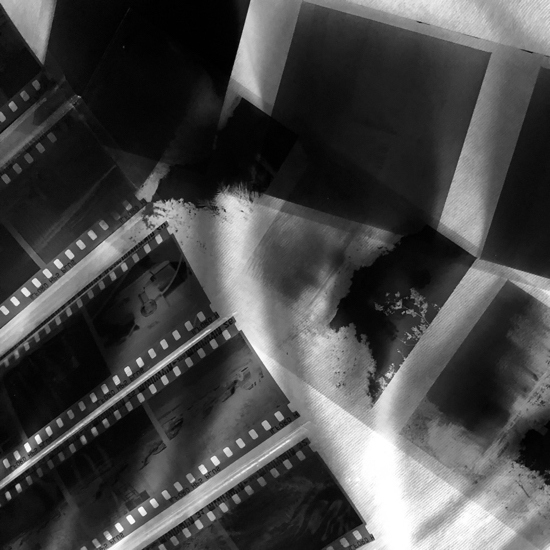
eXtensions - Monday 26 August 2024
By Graham K. Rogers

Post-Negroponte Switch, traditional media are finding their businesses are contracting in the face of modern means of transmission. With the wider interest in film, some manufacturers have brought out boutique films, but these may be less easy to scan. Image manipulation tools are necessary to bring out the best from our photographs, but what is acceptable use with the advance of AI? Procreate takes a stance against AI, but where does Adobe stand with photographers these days?
 In the 1980s when TV received signals over the air and telephones were anchored by cables, Nichola Negroponte, then at the MIT Media Services Lab, suggested that we would be better served if TV came by cable and telephone signals came by wireless means. The latter had been first developed by Bell Labs with its early work on cellular systems in the late 1940s.
In the 1980s when TV received signals over the air and telephones were anchored by cables, Nichola Negroponte, then at the MIT Media Services Lab, suggested that we would be better served if TV came by cable and telephone signals came by wireless means. The latter had been first developed by Bell Labs with its early work on cellular systems in the late 1940s.
This move became known as the Negroponte Switch. While we still have satellite TV and other wireless systems here, there was a significant move to cable transmission in other countries. Worldwide, since the 1990s, telephone use has become almost entirely wireless, although some homes and offices still have cable-connected phone lines.
Like many I have now moved from cable or satellite to internet (cable) delivered TV feeds, specifically Netflix and Apple TV+. The last few meters is handled by WiFi, although I could just as easily attach an Ethernet cable (RJ45 connector) from the router to the box. What I like most about this on demand feed is that, apart from some external events, I am not restricted by time.
Rather than watch an episode of a series when the schedule demands, I can make the tea, potter about, look out of the window, answer some messages and then watch the program when I decide. And if I want to stop in the middle to pour a second cup of tea, I can do that; or I can stop and pick it up the following day. The freedom from schedule slavery and the need to sit through advertisements (a license to print money) has gone and I am willing to pay for that.
This freedom that more and more are embracing has caught some TV executives on the hop. There is lower (or no) growth. Fewer viewers means that advertising contracts are less attractive, and the TV companies are tied to (sometimes) multi-year contracts to provide the programming: series, movies, sports events. Increasing the fees alienates viewers so there is a vicious cycle here. Warner Bros. Discovery and Paramount Global have both recently have been forced to admit that their networks are worth less than before.

Other media have also experienced this change of parameters: a problem that faced print media a few years ago, with falling readership and lower advertising income, coupled with rising costs and the new face of the internet. What invariably happens in the early stages is that personnel are dismissed (but not the executives) so the experience (photographers, writers, printers) are pushed out, the number of pages and the content quality are reduced, leading to fewer readers, slowly at first, but then in more numbers. It is not going to become easier for the more traditional television delivery media. As they contract, so other parts of the conglomerates they are a part of also experience problems, so once great companies, may merge, downsize or disappear.
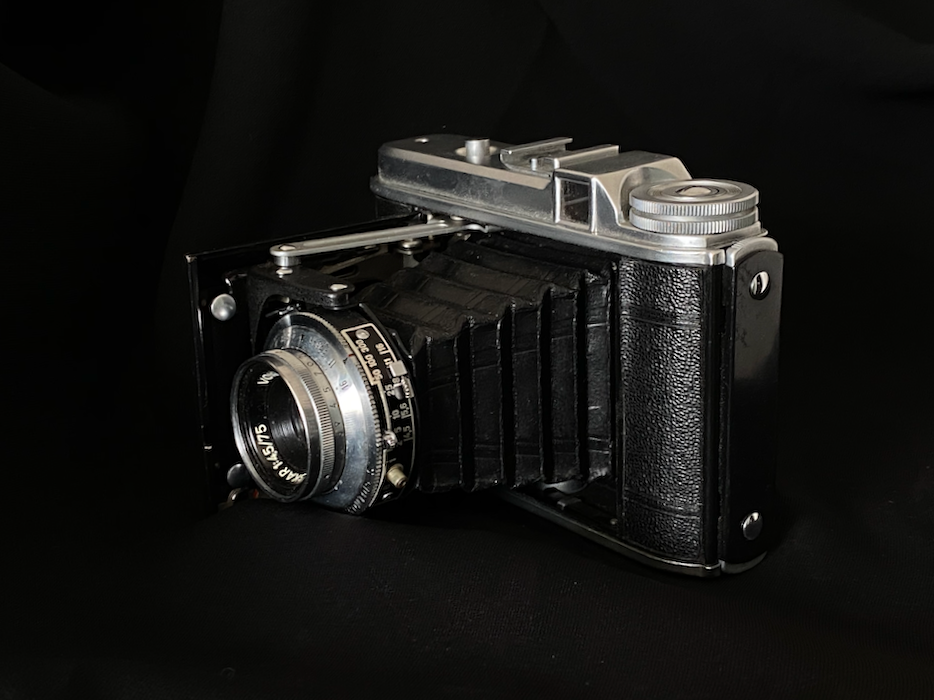
When I first picked up a camera, in the early 1960s, the only film readily available was black & white, with Ilford one of the prime manufacturers for those living in the UK. I used 120 film then, and 127 with a Kodak Box Brownie I picked up in a jumble sale (flea market) for one shilling (5p, 2.25 baht or $0.07). Ilford is still a major film manufacturer. Many companies (and films) disappeared, although after several years when the industry was in recession with the arrival of digital technology, film is more widely available these days with the new popularity of film cameras.
Although these are mainly only available used (and prices on eBay have risen significantly), Leica still make a film camera, at a price, and Pentax has just released a new device: the Pentax 17 (Chris Nicholas, PetaPixel). One of my cameras in the early 1960s split each 120 frame vertically (6x3), but this new Pentax splits the 35mm frame vertically, hence the 17 in the name. The images are similar to vertical shots from the smartphone. It is likely to be fairly popular, but this is not my style. However, I am interested in what reactions this may bring about from other camera makers, who after high sales (mainly of point and shoot devices) in the period around 2010-2012, lost out significantly to smartphone cameras (Jaron Schneider, PetaPixel).

With my film cameras I stick mainly to black and white film, but experiment with different film types and manufacturers' products. DSLR and iPhone produce color images, but I will sometimes edit these as black & white. I am not color blind (mercifully) but I sometimes imagine subjects in black and white. Nonetheless, I produce a good number of color photographs and post them online. This also applies to my film output. For example, in the fridge I have some rolls of Kodak Gold and other color films, and was delighted to try (the parent company of Ilford) Harman's new Phoenix 35mm film recently. I hope this arrives in 120 rolls.

Phoenix was a bit of a one-off as the emulsions used (unlike say Kodak or Fuji films) produced a non-traditional color image. The company wanted to experiment and many camera users were happy to try this. Its makeup enabled "striking halation effects around bright light sources and reflections . . . possible. I was not happy with my results as I had a problem with the Nikon F3 lens (discovered after the film had been developed), and the scanning. What I saw from other sources online (e.g. The darkroom), showed me that my output was sub-par. I learned a lesson here.
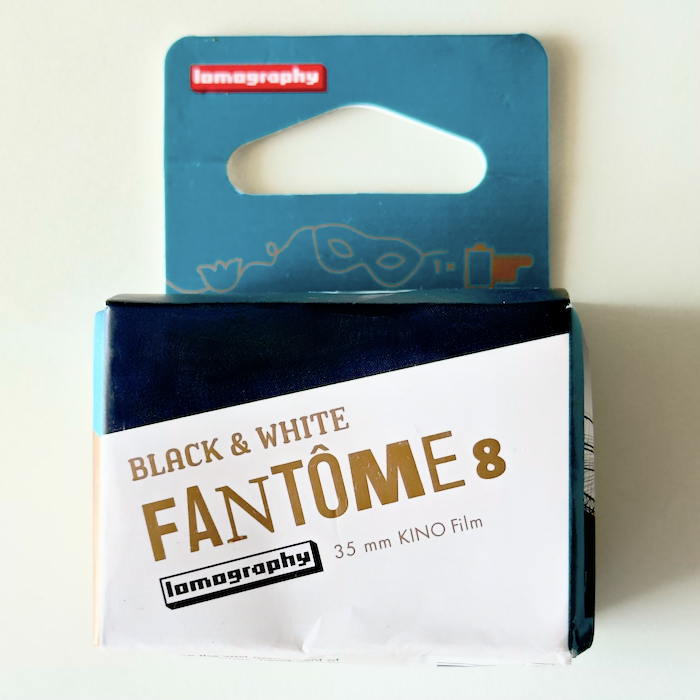 Another maker of films, Lomo, has quite a following among younger users with a selection of cameras as well. I have tried some of their black and white films, including Fantôme Kino 8 (ISO 8) with fairly good results, but they also produce "boutique" films (James Greenhoff). I have had mixed success with LomoChrome Purple, but like Phoenix, I was not able to produce satisfactory output with the LomoChrome Turquoise.
Another maker of films, Lomo, has quite a following among younger users with a selection of cameras as well. I have tried some of their black and white films, including Fantôme Kino 8 (ISO 8) with fairly good results, but they also produce "boutique" films (James Greenhoff). I have had mixed success with LomoChrome Purple, but like Phoenix, I was not able to produce satisfactory output with the LomoChrome Turquoise.
I had not used LomoChrome Purple since late last year and the results from the 3 rolls that I used in 2023 are mixed. I collected a roll this week that had just been developed and the negatives looked fairly sharp with the typical Lomo Purple greenish hue. However, when I scanned the first couple of frames, using first the "Generic" and then "Ektar" settings something was not right. Comments from James Greenhoff who had also experienced problems from a shop scan, and from Blue Moon, had me re-examining the scanner settings.
When I first bought the Canon 9000F flatbed scanner, I downloaded VueScan and have had good results apart from when I use boutique films. Looking at the comments and output from Greenhoff and Blue Moon it was clear that scanner settings were important, with post-editing helping to refine the output too. I turned off the Automatic settings and selected Manual, although there was no immediate difference.
The clue was in the comments from the scanning service that James Greenhoff had included, regarding how the scanner works. He noted that "The scans the lab supplied appear to have been heavily magenta shifted". This was not deliberate: "the scan software is processing the image, whether you like it or not." It was that "magenta shift" that suggested I adjust the RGB sliders. Normally set equally, I changed Red to 1.5, kept Green at 1, and moved Blue to 3 (and also tried 4). VueScan adjusts the Preview image as these settings are changed so I was able to look at a thumbnail image that was closer to what I thought I wanted.
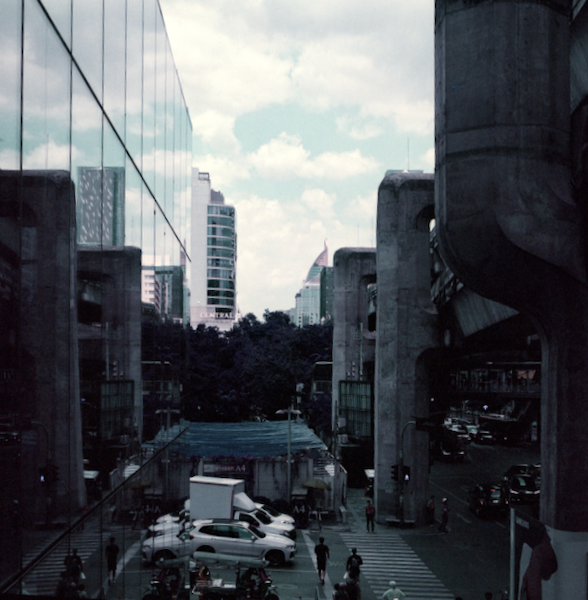
|
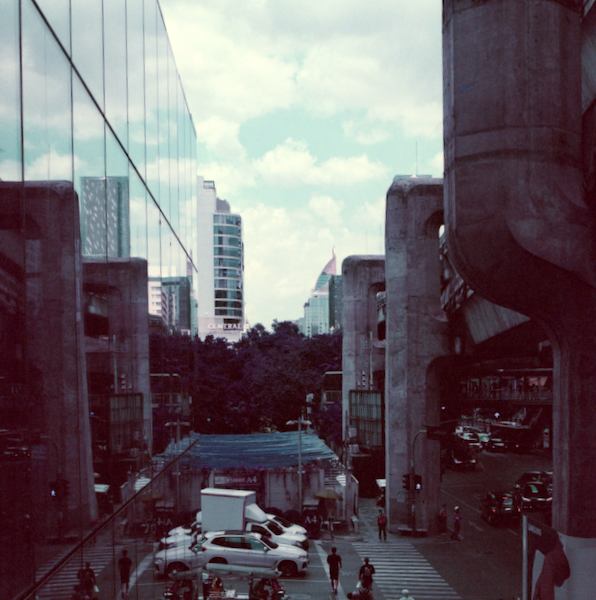
|

|
While I was scanning the image, I tried the different color settings, so the output was varied. I also noted that, the colors depended on the light levels when taking the shots. Sunny street scenes gave a bright image, with lower levels of purple, while the darker environs of Bangkok's old Hualampong station were more somber. A couple of the images with trees, showed these (correctly) as purple. I found that although I adjusted the red and blue saturation in post-editing, this had less effect than changing the input when scanning.
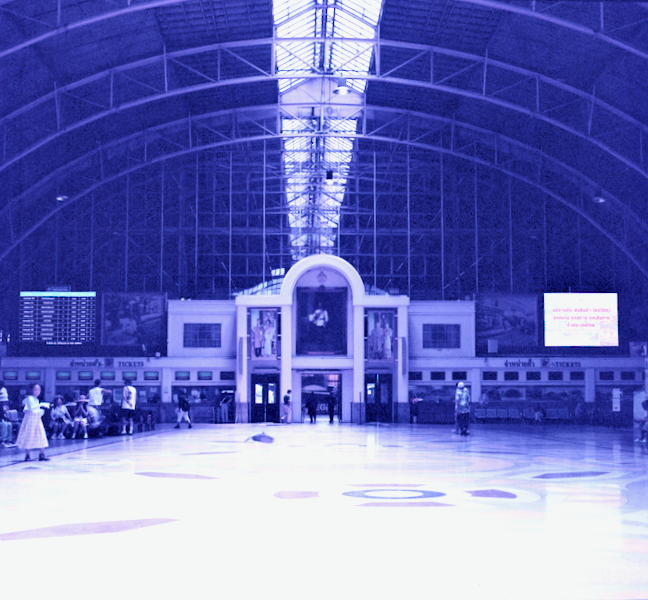
|
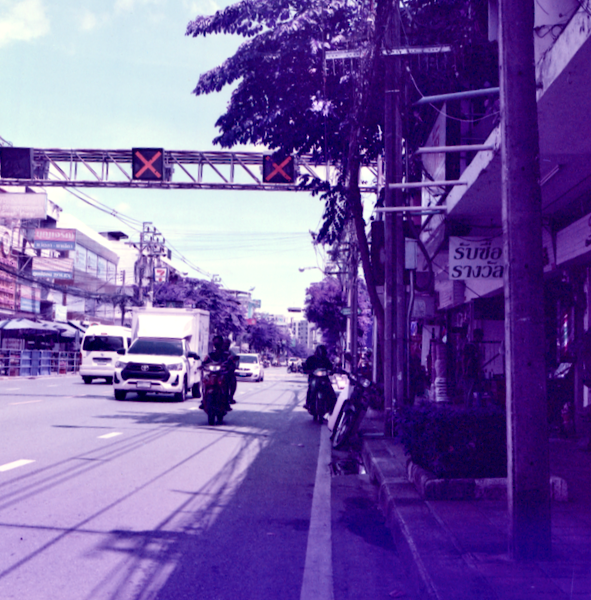
|

|
There were a number of useful comments from the BlueMoon article: "Normal color negative film has an orange film base and digital printers and film scanners are calibrated for this base" and "Lomo Purple has a green base". Also, "[Scanners] see this green base and produce initial results that have heavy red color casts to them". The article also mentioned exposing at 200 or even 100, so I may try that in the future, particularly with regard to the output Blue Moon has on show.

|

|

|
Although I try really hard not to use AI, it is not easy these days. Where does acceptable tool-use end and AI begin? I stopped using one application because of the false sunbeams users could add to their images. Perhaps this might be OK for advertising, but not for someone who claims to be a photographer: adding artifacts that did not exist in the original scene. With digital images from the DSLR, I archive all of the originals. With film, the negatives are stored and the original TIFF scans are also archived. Where I wonder if I cross the line, is with the use of the Repair tool.
 In image editing software it used to be necessary to work at the pixel level for a good repair, say for specks, dust or lint which may appear from dirt on the lens, dust on the sensor, or (on film) tiny artefacts picked up from the lens or in the developing process. Software has improved greatly and the repair (or retouch) tool will clean up the blemish and the area around so that the problem disappears (if applied judiciously). This clearly uses AI (or some clever programming). I justify this by satisfying myself that the blemishes were not part of the original. I use the same argument for my use of tools like Exposure, Contrast, Brightness, Black Point, et al.
In image editing software it used to be necessary to work at the pixel level for a good repair, say for specks, dust or lint which may appear from dirt on the lens, dust on the sensor, or (on film) tiny artefacts picked up from the lens or in the developing process. Software has improved greatly and the repair (or retouch) tool will clean up the blemish and the area around so that the problem disappears (if applied judiciously). This clearly uses AI (or some clever programming). I justify this by satisfying myself that the blemishes were not part of the original. I use the same argument for my use of tools like Exposure, Contrast, Brightness, Black Point, et al.
There were several positive comments last week when Procreate, developer of a popular design app announced that they are not interested in AI. Indeed, Conor Jewiss (iMore) reports that CEO James Cuda announced, "I really ***** hate generative AI" and the company has promised that it will never do AI. While mentioning the use of Pixelmator and Affinity Photo at the iMore offices, both of which I also use, Jewiss also points out how Adobe has changed in recent times and that digital artists have "been feeling more than a bit uneasy with how AI is creeping into their creative spaces."
This is mirrored in the world of photography and there have been several criticisms of Adobe of late. It seems to have changed from an essential tool and has turned its back on creatives with a greedy eye on corporate subscriptions. On PetaPixel, Alex Cooke introduces a video from Tony and Chelsea Northrup, that highlights this growing frustration. Cooke mentions some of the problems that users have faced, from subscriptions, Lightroom facial recognition, a lack of new features, hidden cancellation fees, to the "use of user-generated content to train its AI systems" without compensating the photographers. He adds that "Adobe seems to be pushing a narrative that designers and photographers are no longer needed." Adobe owes its existence and growth to photographers.

Graham K. Rogers teaches at the Faculty of Engineering, Mahidol University in Thailand. He wrote in the Bangkok Post, Database supplement on IT subjects. For the last seven years of Database he wrote a column on Apple and Macs. After 3 years writing a column in the Life supplement, he is now no longer associated with the Bangkok Post. He can be followed on X (@extensions_th). The RSS feed for the articles is http://www.extensions.in.th/ext_link.xml - copy and paste into your feed reader.

For further information, e-mail to
Back to
eXtensions
Back to
Home Page